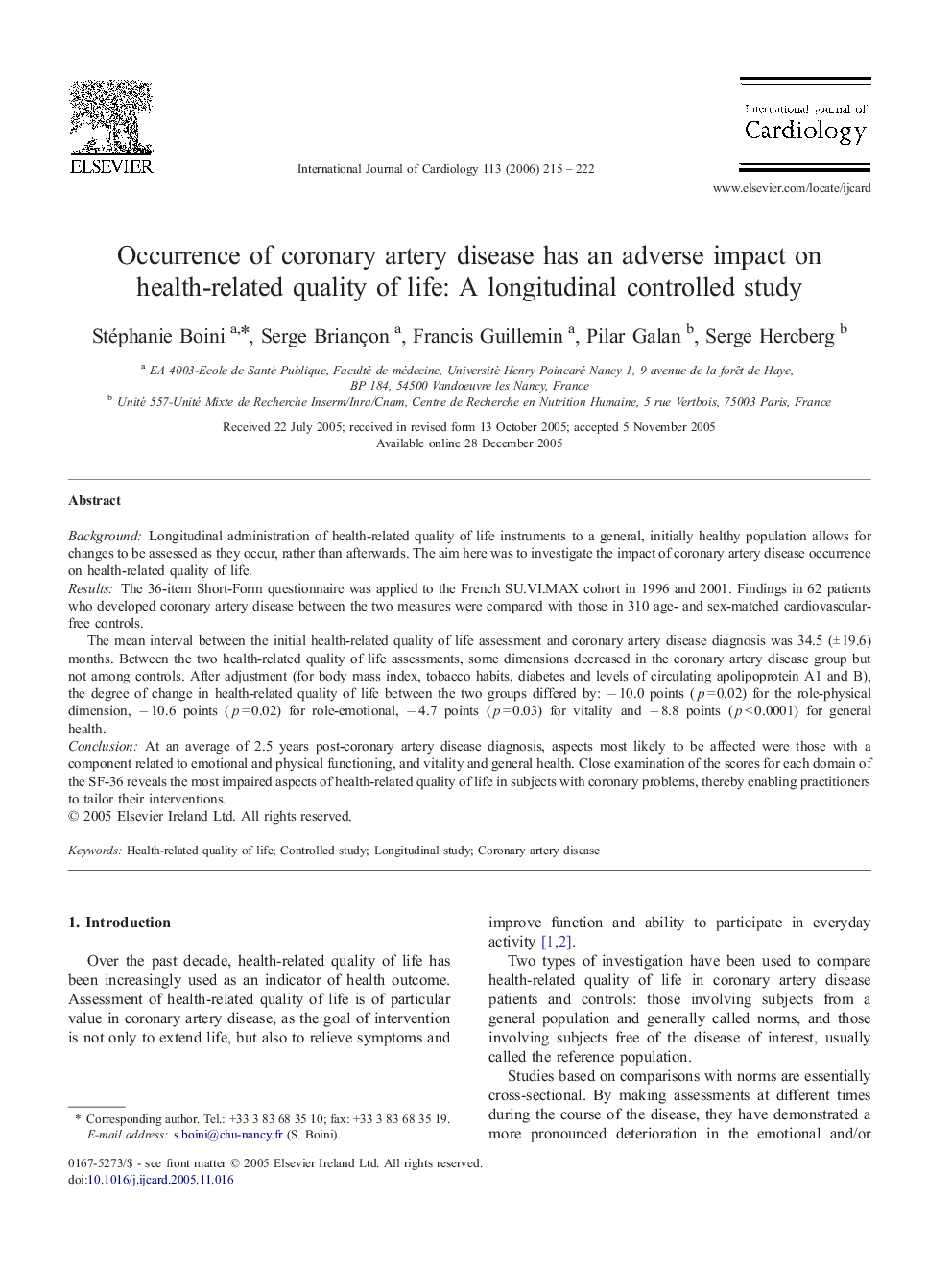| Article ID | Journal | Published Year | Pages | File Type |
|---|---|---|---|---|
| 2936415 | International Journal of Cardiology | 2006 | 8 Pages |
BackgroundLongitudinal administration of health-related quality of life instruments to a general, initially healthy population allows for changes to be assessed as they occur, rather than afterwards. The aim here was to investigate the impact of coronary artery disease occurrence on health-related quality of life.ResultsThe 36-item Short-Form questionnaire was applied to the French SU.VI.MAX cohort in 1996 and 2001. Findings in 62 patients who developed coronary artery disease between the two measures were compared with those in 310 age- and sex-matched cardiovascular-free controls.The mean interval between the initial health-related quality of life assessment and coronary artery disease diagnosis was 34.5 (± 19.6) months. Between the two health-related quality of life assessments, some dimensions decreased in the coronary artery disease group but not among controls. After adjustment (for body mass index, tobacco habits, diabetes and levels of circulating apolipoprotein A1 and B), the degree of change in health-related quality of life between the two groups differed by: − 10.0 points (p = 0.02) for the role-physical dimension, − 10.6 points (p = 0.02) for role-emotional, − 4.7 points (p = 0.03) for vitality and − 8.8 points (p < 0.0001) for general health.ConclusionAt an average of 2.5 years post-coronary artery disease diagnosis, aspects most likely to be affected were those with a component related to emotional and physical functioning, and vitality and general health. Close examination of the scores for each domain of the SF-36 reveals the most impaired aspects of health-related quality of life in subjects with coronary problems, thereby enabling practitioners to tailor their interventions.
